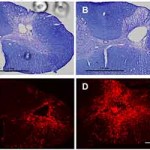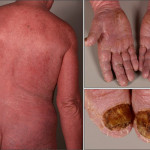Monthly Archives:February 2016
Bad news for people with a penicillin allergy
There are over 500,000 hospitalizations annually in the U.S. in which patients will have a reported allergy against first line antibiotics. Beta-lactams are the largest group of antibiotics which include penicillins, cephalosporins, and carbapenems. These antibiotics are
When the going gets tough: Sleepy lizards’ personality affect the way they use space
The “other” concussion: spinal cord concussion
Blast exposure causes brain injury due to pressure waves
Tracing aluminium adjuvants in viable cells
Dolphins help one another
Dolphins often help one another, assistance occurring in a variety of contexts that range from babysitting another dolphin’s calf to cooperative foraging to efforts to save another dolphin’s life. In this report, we describe the helpful efforts
Selective naked-eye sensors for real time detection of mercury ion in water
Do the different actions required to gain a palatable food make a difference in the activation of the brain?
Towards wearable electronic devices that are powered by sweat
Milk exosomes for drug delivery
CD164 helps physicians to diagnose and treat cancer in Sézary Syndrome
Side effects of radiation therapy: Why me?
Extended VATS lobectomy
Bleeding and thrombosis in a patient with primary antiphospholipid syndrome using norethisterone
Antiphospholipid syndrome is an autoimmune hypercoagulable state caused by specific antibodies, and it is known to be associated with the occurrence of blood clots, or thrombosis, in the veins and/or arteries. However bleeding is rarely associated with the syndrome. Only a few cases
Evaluating methods for detecting deadly skin cancers
Disguising insulin as an antibody: a Trojan horse for type 1 diabetes prevention
Trends in expected lifetime without and with activity limitations in Denmark
My research history – from molecular structure to surface science
Investigation of the molecular structure of SiCl4 using gas electron diffraction (GED) was the topic of my research I picked up when I started my graduate study at Department of Chemistry, the University of Tokyo. However, initial





















